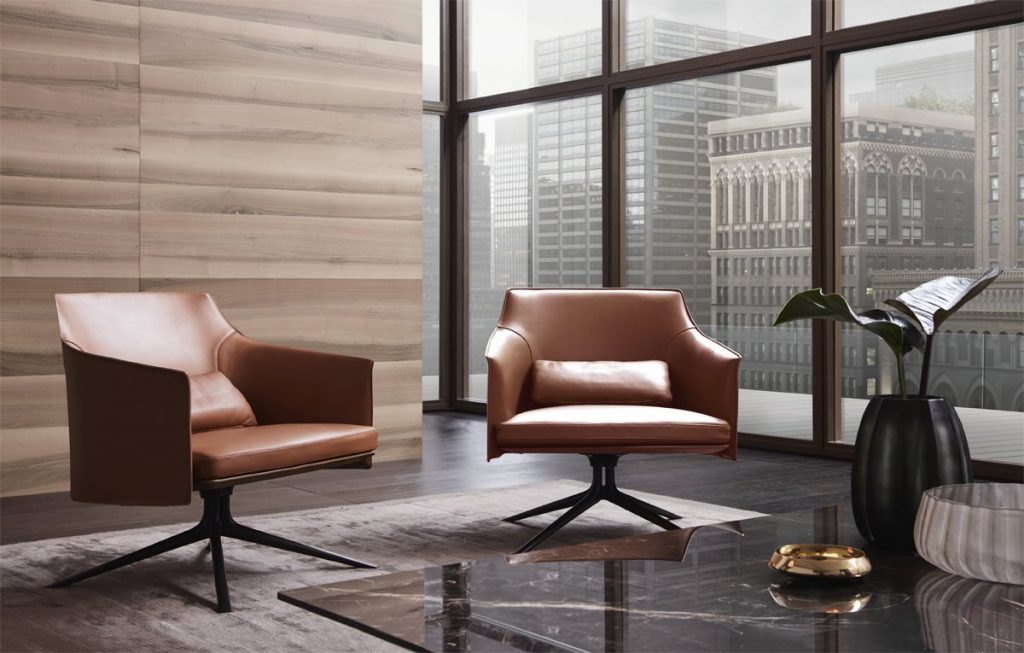The Latest Trends in Sustainable Furniture Design for Eco-Conscious Buyers
The Latest Trends in Sustainable Furniture Design for Eco-Conscious Buyers
Blog Article
Resilient and Elegant: The Best Materials for Long-Lasting Furnishings
The choice of products for furniture style is a vital aspect in achieving both sturdiness and style. Hardwoods like oak and maple not just offer aesthetic warmth but likewise provide extraordinary strength, while engineered wood provides an appealing alternative for budget-conscious consumers - Furniture.
Solid Wood Options

Softwoods like ache and cedar also present practical alternatives, albeit with different characteristics. Pine is easy and light-weight to collaborate with, making it an excellent option for rustic furniture, while cedar is normally resistant to decay, perfect for outside applications.
When picking a timber kind,It is crucial to consider the designated use of the furniture. Items that withstand hefty wear needs to focus on tougher woods, while decorative items might profit from softer, extra visually attractive ranges. Ultimately, the appropriate choice of solid timber not only boosts the long life of the furniture yet likewise boosts the total visual of the living area.
Engineered Wood Perks
Engineered timber, often described as composite wood, provides numerous advantages that make it a compelling choice for resilient furniture. Among the primary benefits of crafted wood is its boosted stability compared to solid timber. Constructed from layers of timber fibers or veneers, it minimizes the risk of warping and fracturing, which prevail concerns with natural wood because of changes in moisture and temperature.

Additionally, crafted wood is an eco-friendly alternative, as it makes use of smaller sized trees and timber byproducts, advertising lasting forestry techniques. The manufacturing procedure additionally causes less waste, making it a liable choice for eco-conscious consumers.
Steel Resilience
Offering remarkable stamina and durability, metal is a prime product choice for durable furnishings. Recognized for its durability, steel can withstand significant deterioration, making it a perfect alternative for both commercial and domestic environments. Whether it is steel, light weight aluminum, or functioned iron, each type of steel provides special buildings that add to the general toughness of the furnishings.
Steel, for instance, is celebrated for its high tensile strength and resistance to bending, guaranteeing that pieces remain structurally audio gradually. Light weight aluminum, on the various other hand, is light-weight and resistant to corrosion and deterioration, making it especially suitable for outdoor furnishings. Wrought iron, with its typical charm, flaunts outstanding durability and can endure severe climate condition without endangering its honesty.
In enhancement to its physical buildings, metal furniture usually goes through protective treatments, such as powder coating or galvanization, which better improve its resistance to scratches and ecological variables. This level of longevity makes steel furnishings a visite site rewarding investment, as it not just maintains its visual appeal however additionally stands the examination of time, making certain performance for years ahead.
Upholstery Selections
Picking the right upholstery is critical for enhancing both the resilience and visual appeal of furnishings. Furniture materials can substantially influence the long life of a piece, with alternatives ranging from natural fibers to artificial textiles.
Natural fibers, such as cotton and linen, deal breathability and comfort however might require even more upkeep to endure fading and use over time. On the other hand, wool is a robust selection known for its durability and resistance to discoloration, making it ideal for high-traffic areas.
For those looking for resilience with less maintenance, artificial materials like polyester and nylon supply excellent options. These materials are usually engineered to be stain-resistant and fade-proof, making them perfect for households with family pets or youngsters. Microfiber, a subtype of polyester, is specifically popular for its soft texture and very easy cleansing residential properties.
Natural leather, while usually a lot more expensive, adds a timeless elegance to furniture. Its all-natural resilience enables have a peek here it to age magnificently, creating a special aging over time. It requires specific upkeep to maintain its appeal.
Eventually, picking upholstery involves balancing visual choices with functional considerations, guaranteeing that the furniture not only looks good but additionally stands the examination of time. Furniture.
Sustainable Materials
Stressing ecological responsibility, sustainable products have actually obtained prestige in furniture design, showing an expanding awareness of ecological impact. These products not just lower the carbon footprint however additionally ensure the long life of furnishings, contributing to a round economy.
Typical reference sustainable products include reclaimed timber, which repurposes existing wood, decreasing the need for logging. Bamboo is another exceptional choice; it is fast-growing and requires marginal resources, making it a green alternative to conventional hardwoods. In addition, recycled metals and plastics are significantly utilized in furnishings manufacturing, promoting waste decrease and source conservation.
All-natural fibers such as organic cotton, hemp, and bed linen are favored for furniture, as they are complimentary and naturally degradable from damaging chemicals. The use of low-VOC (unstable natural compounds) finishes and adhesives better enhances the sustainability of furniture, making certain much better interior air top quality.
Conclusion
Solid timbers like oak and maple supply toughness and special personality, while crafted timber offers stability and cost-effectiveness. Sustainable materials such as redeemed timber and bamboo add to ecological duty, making them suitable for contemporary furniture solutions that focus on both design and longevity.
Engineered timber, commonly referred to as composite wood, supplies various advantages that make it a compelling choice for resilient furnishings. One of the key benefits of engineered timber is its improved stability contrasted to solid timber. Built from layers of wood fibers or veneers, it minimizes the risk of warping and cracking, which are typical issues with all-natural timber due to modifications in humidity and temperature level.
Strong woods like oak and maple give stamina and unique personality, while engineered timber provides stability and cost-effectiveness. Lasting materials such as recovered wood and bamboo add to environmental obligation, making them excellent for modern furnishings services that prioritize both design and toughness.
Report this page